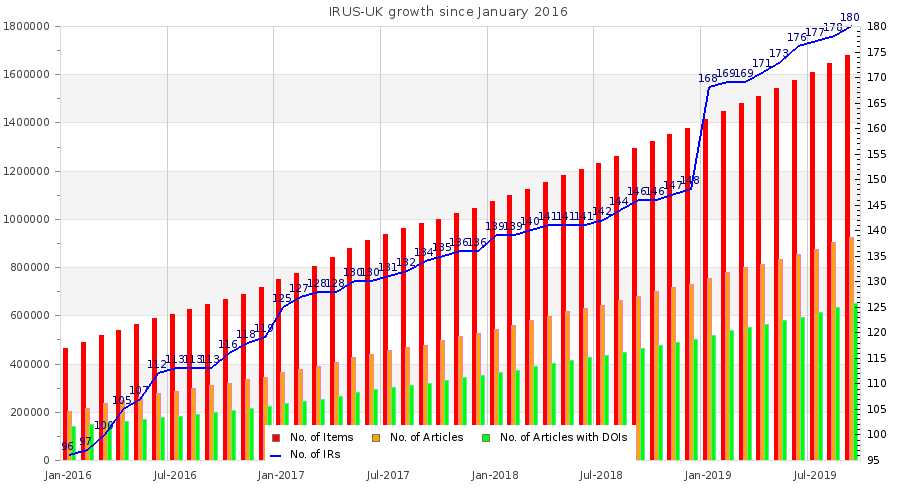Itamar Shatz has written a guest blog post for the Office of Scholarly Communication about how public trust in the scientific community increases when researchers make their data openly available to all. He also emphasizes that science communicators (e.g. press offices, journalists, publishers) have a responsibility to point attention directly at the primary source of the data. Itamar is a PhD candidate in the Department of Theoretical and Applied Linguistics at the University of Cambridge. He is also a member of the Cambridge Data Champion programme, having joined at the start of this year. He writes about science and philosophy that have practical applications at Effectiviology.com.
It’s no secret that the public’s view of the scientific community is far from ideal.
For example, a global survey published by the Wellcome Trust in 2019 showed that, on average, only 18% of people indicate that they have a high level of trust in scientists. Furthermore, the survey showed that there are stark differences between people living in different areas of the world; for instance, this rate was more than twice as high in Northern Europe (33%) and Central Asia (32%) than in Eastern Europe (15%), South America (13%), and Central Africa (12%).
Things do appear to be improving, to some degree, especially in light of the recent pandemic. For example, a recent survey in the UK, conducted by the Open Knowledge Foundation, has found that, following the COVID-19 pandemic, 64% of people are now “more likely to listen expert advice from qualified scientists and researchers”. Similar increases in public confidence have been found in other countries, such as Germany and the USA. However, despite these recent increases, there is still much room for improvement.
Open data can help increase the public’s confidence in scientists
The public’s lack of confidence in scientists is a complex, multifaceted issue, that is unlikely to be resolved by a single, neat solution. Nevertheless, one thing that can help alleviate this issue to some degree is open data, which is the practice of making data from scientific studies publicly accessible.
Research on the topic shows just how powerful this tool can be. For example, the recent survey by the Open Knowledge Foundation, conducted in the UK in response to the COVID-19 pandemic, found that 97% of those polled believed that it’s important for COVID-19 data to be openly available for people to check, and 67% believed that all COVID-19 related research and data should be openly available for anyone to use freely. Similarly, a 2019 US survey conducted before the pandemic found that 57% of Americans say that they trust the outcomes of scientific studies more if the data from the studies is openly available to the public.
Overall, such surveys strongly suggest that open data can help increase the public’s trust in scientists. However, it’s not enough for studies to just have open data for it to increase the public’s trust; if people don’t know about the open data, or if don’t fully understand what it means, then open data is unlikely to be as beneficial as it could be. As such, in the following section we will see some guidelines on how to properly incorporate open data into science communication, in order to utilize this tool as effectively as possible.
How to incorporate open data into science communication
To properly incorporate open data into science communication, there are several key things that people who engage in science communication—such as journalists and scientists—should generally do:
- Say that the study has open data. That is, you should explicitly mention that the researchers have made the data from their research openly available. Do not assume that people will go to the original study and then learn there about the data being open.
- Explain what open data is. That is, you should briefly explain what it means for the data to be openly available, and potentially also mention the benefits of making the data available, for example in terms of making research more transparent, and in terms of helping other researchers reproduce the results.
- Describe what sort of data has been made openly available. For example, you can include descriptions of the type of data involved (surveys, clinical reports, brain scans, etc.), together with some concrete examples that help the audience understand the data.
- Explain where the data can be found. For example, this can be in the article’s “supplementary information” section, though data should preferably be available in a repository where the dataset has its own persistent identifier, such as a DOI. This ensures that the audience can find and access the data, which may otherwise be hidden behind a paywall, and offers other benefits, such as allowing researchers to directly access and cite the dataset, without navigating through the article.
These practices can help people better understand the concept of open data, particularly as it pertains to the study in question, and can help increase their trust in the openness of the data, especially if it is placed somewhere that they can access themselves.
For one example of how open data might be communicated effectively in a press release, consider the following:
“The researchers have made all the data from this study openly available; this means that all the results from their experiments can be freely accessed by anyone through a repository available at: https://www.doi.org/10.xxxxx/xxxxxxx. This can help other scientists verify and reproduce their results, and will aid future research on the topic.”
Open data in different types of scientific communications
It’s important to note that there’s no single right way to incorporate open data into scientific communications. This can be attributed to various factors, such as:
- Differences between fields (e.g. biology, economics, or psychology)
- Differences between types of studies (e.g. computational or experimental)
- Differences between media (e.g. press release or social media post).
Nevertheless, the guidelines outlined earlier can be beneficial as initial considerations to take into account when deciding how to incorporate open data into science communication. It is up to communicators to make the final modifications, in order to use open data as effectively as possible in their particular situation.
Summarizing what we’ve learned
Though the public’s trust in science is currently growing, there is much room for improvement. One powerful tool that can aid the academic community is open data—the practice of making data from research studies openly available. However, to benefit as much as possible from the presence of open data, it’s not sufficient for a study to merely make its data open. Rather, the accessibility of the data needs to be promoted and explained in scientific communication, and the dataset needs to be cited appropriately (see the Joint Declaration of Data Citation Principles for guidelines regarding this latter point).
What is currently being done
It is important to note that much work is already being done to promote the concept of open data. For example, organizations such as the Research Data Alliance promote discussion of the topic and publish relevant material, as in the case of their recent guidelines and recommendations regarding COVID-19 data.
In addition, at the University of Cambridge, in particular, we can already see a substantial push for open data practices, where appropriate, and from many angles as outlined in the University’s Open Research position statement. Many funding bodies mandate that data be made available, and the University facilitates the process of sharing the data via Apollo, the institutional repository. Furthermore, there are the various training courses and publications—including this very blog—led by bodies such as the Office of Scholarly Communication (OSC), which help to promote Open Research practices at the University. Most notably, there is the OSC’s Data Champion programme, which deals, among other things, with supporting researchers with open data practices.
Moving forward
Promoting the use of open data in scientific communication is something that different stakeholders can do in different ways.
For example, those engaging in science communication—such as journalists and universities’ communication offices—can mention and explain open data when covering studies. Similarly, scientists can ask relevant communicators to cite their open data, and can also mention this information themselves when they engage in science communication directly. In addition, consumers of scientific communication and other relevant stakeholders—such as the general public, politicians, regulators, and funding bodies—can ask, whenever they hear about new research findings, whether the data was made openly available, and if not, then why.
Overall, such actions will lead to increased and more effective use of open data over time, which will help increase the trust people have in scientists. Furthermore, this will help promote the adoption of open data practices in the scientific community, by making more scientists aware of the concept, and by increasing their incentives for engaging in it.
Published 19 June 2020
Written by Itamar Shatz





